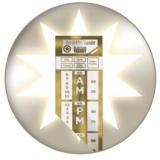 This month’s Golden Transfer goes to Evan Siroky, a recent UW graduate and self-described “transit freak.” Evan is car-free by choice, and though only a few months into his first professional job, he’s already in a far better financial position than most of his peers. In addition to saving lots of money by not owning a car, he’s also earning lots of money by working a second job, as (it doesn’t get better than this, folks) a rider information specialist for Metro. Says Evan,
This month’s Golden Transfer goes to Evan Siroky, a recent UW graduate and self-described “transit freak.” Evan is car-free by choice, and though only a few months into his first professional job, he’s already in a far better financial position than most of his peers. In addition to saving lots of money by not owning a car, he’s also earning lots of money by working a second job, as (it doesn’t get better than this, folks) a rider information specialist for Metro. Says Evan,
Almost every weekend I religiously go to King Street Center to tell people how to get from one place to another using public transportation. I, too, am carless and enjoy this lifestyle. Not owning a car saves me money, it is safer, and it is always a fun way to start a conversation. I now know almost every bus route in King, Pierce, and Snohomish County. People at my frat even started calling me Mapquest!
I met Evan a few weeks ago–to talk transit, of course. Would that all rider information specialists were as knowledgeable and passionate about transit as he is! Because he’s car free, the man knows his bus routes, and he actually spends his spare time creating tools that help him do his job better. Some examples:
A map of all of the park & rides in King County
A map of all the transfer centers in King County
He created the maps using Windows Live Local‘s “collection” feature. (I’m using the same tool to create interactive maps of bus routes I like. I’ll post the first one soon.) They do take a bit of time to load, so be patient.
Thanks, Evan, for providing an example of the benefits of a bus-based life, and for doing your part to make it easier for others to ride.
